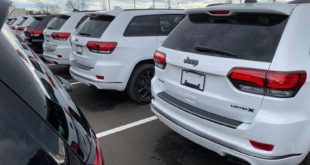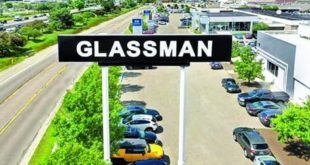
To what extent the coronavirus pandemic will wreak havoc on the automotive finance sector is a mystery. But what is known is that finance and insurance profits and product sales have been roiled.
J.D. Power data suggests that F&I profits fell in the weeks following shelter-in-place orders aimed at mitigating the spread of COVID-19, particularly in areas hardest hit and with stricter government closures.
Yet in areas with looser restrictions and where dealerships were established early on as essential businesses, F&I sales reached historic highs.
F&I profit per vehicle rose by about 50 percent at Planet Hyundai in Golden, Colo., in April compared with previous months, even as vehicle sales fell off a cliff. But even with a larger sample size in May, profits remained hundreds of dollars above average.
Vehicle sales were down an “apocalyptic” 90 percent for six consecutive weeks, according to General Manager Jamie Payne, though the store was rebounding strongly.
“We were able to unlock our sales doors 10 days ago,” Payne told Automotive News on May 19. “We’re pacing up in sales year over year.”
In the months before COVID-19 closures, Planet Hyundai made about $ 1,000 in F&I profit per vehicle for new- and used-vehicle sales. The store averaged $ 1,500 per vehicle in April and $ 1,450 in May.
“There’s just so much uncertainty in the market right now,” Payne said. “It’s creating this opening where [finance] didn’t really have that angle to play before.”
Some F&I product companies are reporting higher than normal sales during the COIVD-19 crisis.
Elliot Schor, assistant vice president of sales at JM&A Group, said F&I product penetration rose 4.1 percent during the height of COVID-19 closures, though he added dealerships in the Northeast struggled most with F&I product sales. JM&A F&I products are sold at 3,800 dealerships, franchised and independent, across the U.S.
The average F&I profit per vehicle retailed is $ 1,350 for JM&A’s dealership clients. From March 11 to May 27, that climbed to $ 1,406 per vehicle.
Schor has a few theories as to why F&I figures climbed during closures. Fewer customers meant that each F&I manager had more time to commit to each sale, so there was less pressure to move on quickly. In conversations with field representatives and dealership clients, Schor heard there was a lot of interest in aftermarket products from customers whose manufacturer warranties were coming to an end.
“Customers are buying extended warranties through other channels in greater numbers,” Schor said. “Rather than buy a new car, they’re actually purchasing an extended service contract and keeping that car.”There’s a similar trend of consumers purchasing guaranteed asset protection coverage. With vehicle auctions closing and companies such as Hertz Global Holdings Inc. filing for bankruptcy, consumers are more concerned than ever that their vehicle valuation is sliding, Schor said. When comparing F&I product sales early in 2020 with those in recent weeks, JM&A’s GAP sales rose 17 percent.
Safe-Guard, one of the largest F&I product companies in the U.S., said results over the past several months have varied widely by vehicle brand and the volume of incentives supplied by the automakers.
For one brand, which Safe-Guard wouldn’t identify, there was an increase of bundled or multicoverage product sales compared with individual product sales.
“We believe that this is due to a combination of decreased vehicle sales and an increase in retailer products per deal compensation plans,” a spokeswoman said in an email.
Dealerships that had digital retailing technology that includes the F&I processs in place may have had an edge during stricter shelter-in-place orders. F&I software company Darwin Automotive said there was no noticeable change in F&I profit per vehicle retailed for its clients during shutdowns and that vehicle sales at stores with Darwin software were off just 15 to 20 percent in April, according to CEO Phil Battista.
“Without F&I being front and center as part of the digital retailing process, we are seeing [dealership] customers entering digital retail without F&I are losing money,” Battista said.
Dealerships that established digital retailing processes reported a 58 percent increase in F&I profits on new vehicles sold in April, according to a study last month by the National Automobile Dealers Association and digital retailing provider Roadster.
Justin Gasman, financial services director at McCaddon Cadillac-Buick-GMC in Boulder, Colo., said his F&I sales have been on a roller coaster.
March was “an unprecedented month in terms of the lowest [vehicle] sales I’d ever seen, the highest product penetration and the highest averages,” he said.
In March, Gasman sold service contracts on 81 percent of the 28 vehicles the store sold, averaging more than $ 3,000 in profit per vehicle. In April, the store sold just 24 cars, and Gasman’s penetration fell to 55 percent. In May, it was down to 32 percent.
“The only thing I’ve consistently done is, I’ve followed my process, done the same thing consistently on every sale,” Gasman said. “We didn’t change anything about our process other than the fact we’re sanitizing everything, wiping things down and wearing masks.”


